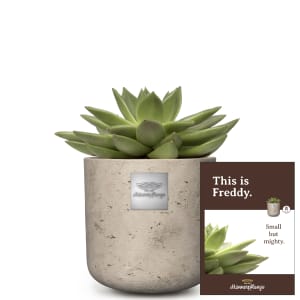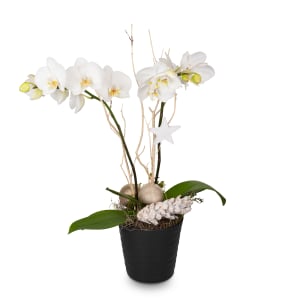General tips for indoor plants
Whether at home or in the office, indoor plants have been popular for years. Here you will find answers to questions
about how to choose, water and fertilize them - even plants for men.
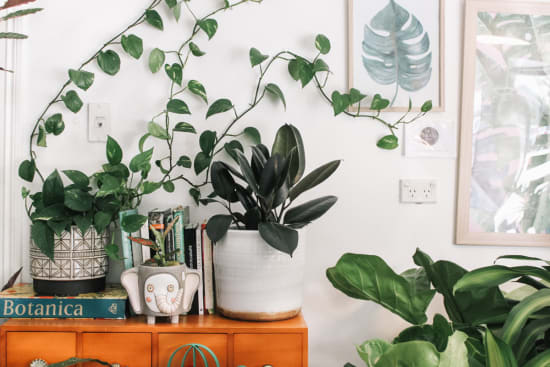
Making the right choice
Whether a pot plant thrives depends primarily on whether you give it the position it needs.
So do get some advice and tell the Fleurop professional
about the light conditions and humidity, for example, at its future location.

- Without sufficient light, plants cannot process either water or food. Even plants that don't need a lot of light often wither because their needs are underestimated. For example, if a plant is 2-3 m away from the window, only 10 percent of the radiation it would receive in the open air will be available. Special plant lamps are helpful here.
- The room temperature and humidity are also important. A lot of pot plants come from regions with a humidity of around 90 percent, but homes generally only have 40 percent - especially in winter. If room temperatures of up to 25 degrees are added, the humidity has to be increased, e. g. by putting evaporating dishes in place. Plants can tolerate these better than spraying, which can also damage furniture.

- Grouping several plants also creates a somewhat moister microclimate and may be helpful.
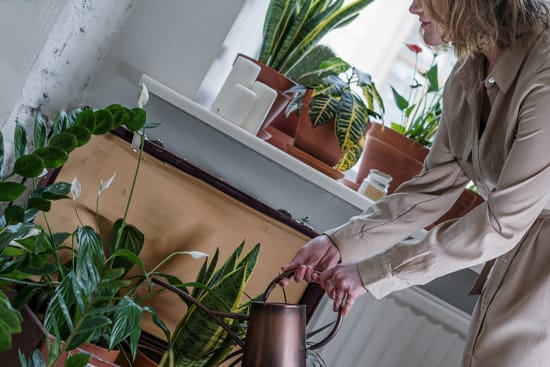
How to water them correctly
Different plants need different amounts of water, so there are no hard-and-fast rules about watering them.
However, Fleurop advises you to water them too sparingly rather than overdoing it. Too much water drives the oxygen out of the soil and suffocates the roots. Plants are literally «watered to death».

Here are some additional ground rules:
- Cacti and succulents do not need much water. Depending on their position and the variety of plant, they may only need to be watered once a month.
- Abundantly flowering, large-leaved plants have a high rate of evaporation and accordingly need a lot of water.
- Plants with fleshy roots such as asparagus, clivias and spider plants cope with drought better than others because they can store water. Water them sparingly.
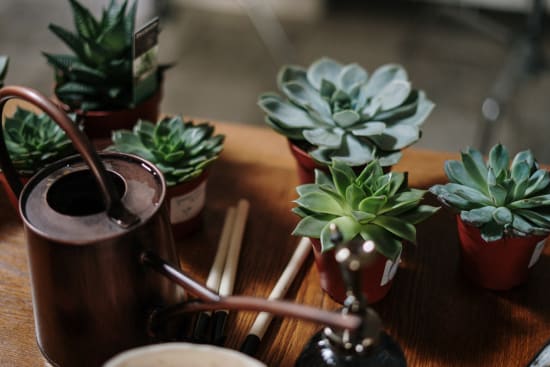
- If you have plants of the pineapple family, which have a funnel of leaves in their centre (e. g. billbergias and guzmanias), you should always be able to see a little water in the funnel while the pot ball should not be too moist. Empty this funnel once a month to prevent odors. Afterwards, fill it with fresh water.
- Most plants can be watered from the top. However, they can also absorb water from the planter or saucer with their roots.
- Important: water that has not been absorbed from the planter or saucer within two hours must be removed. If the soil gets waterlogged, the fine hair roots die and the plants dry out even though they are standing in water.

The amount and frequency with which plants need to be watered also depends on the room temperature.
The best thing to do is to test the moisture level of the pot ball with a finger to discover whether or not a plant needs water.
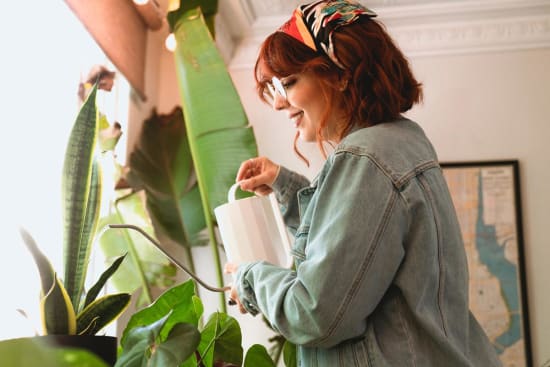
How to feed them properly
Plants only need to be fed in their growth period, which for most of them is between the spring and the autumn,
but is in the autumn and winter for winter flowering plants.
- Commercial plant foods have proved effective, and the work has also become easier with the introduction of fertilizer sticks and slow-release fertilizers. Buy a suitable plant food and use it in accordance with the package instructions.
- A universal fertilizer is often adequate and supplies plants with the key nutrients. However, purchasing special plant food for roses, cacti, orchids and flowering balcony plants, for example, is worthwhile. The same applies to herbs, where an organic fertilizer is definitely the most intelligent solution.
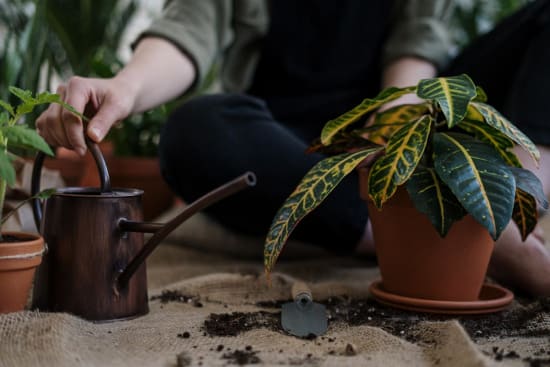
Important: do not overdose. And always feed them after watering or add the fertilizer to their water. If you feed
plants when they are dry, there is a risk that the roots may burn.
An excessive concentration of fertilizer salts can lead to plants being unable to absorb water, and water will be withdrawn from their tissue.
Not least, the protein in the plants will suffer practically irreversible damage.

Car for men plants - a piece of cake
If you are fond of one of our plants for men, you don't need to worry about the right location and care.
Because apart from the fact that our male plants are really easy to care for, you can find all the tips via this
link.
Other important tips
Care tips for flowers, bouquets and arrangements
Here you will find the most important rules: «golden ones», which are best learned by heart, but then also special tips for cut flowers, bouquets and flower arrangements.
General tips for indoor plants
Whether at home or in the office, indoor plants have been popular for years. Here you will find answers to questions about how to choose, water and fertilize them - even plants for men.
Care tips for special cut flowers
Some popular cut flowers are delicate. It is better to know how to deal with them. Here are the main tips.
Care tips plants for balcony & terrace
Here you will find care tips for some particularly attractive plants, which we change or add to from time to time depending on trends and supply.
Care tips for orchid plants
Orchids are exclusive and exotic. As easy to care for plants, they are a noble gift and last for many months with a little know-how.
Care tips for Advent wreaths & candles
What can be done to keep an Advent wreath beautiful throughout December? And how do you buy and treat candles? Here are our answers.
Care tips for Christmas flowers
When it comes to Christmas spirit, poinsettias, amaryllis and Christmas roses can't be missing in bouquets and arrangements. Here are our tips.
Care tips for Christmas plants
Fancy a pretty little Christmas tree in a pot, poinsettias, amaryllis and Christmas roses? Here you will find the appropriate care tips.


